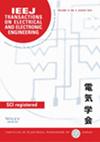求助PDF
{"title":"Analysis of Response and Dynamic Stability of Terminal Tower-Line System in Wind Farm under Wind and Ice Combined Loads","authors":"Yongcan Zhu, Yupeng Liu, Shuai Wang, Ruiwen Zhou, Yiran Zhang, Xinbo Huang","doi":"10.1002/tee.70123","DOIUrl":null,"url":null,"abstract":"<p>The stable operation of wind farms is important for achieving sustainable development and environmental protection. To understand the wind and ice response characteristics of the terminal tower-line system in a wind farm. A spatial finite element model of the terminal tower-line system of a 35 kV wind farm was established, and the harmonic superposition method was employed to simulate the fluctuating wind load time history of the system. By superimposing static wind loads, the characteristics of the wind-induced vibration response and the dynamic stability of the ice-covered tower-line system under different wind direction angles were analyzed. The results indicated that, compared to a single tower structure, the tower-line coupling effect has a more significant impact on the wind-induced vibration response of the terminal tower-line system. The most unfavorable wind direction is perpendicular to the conductor arrangement, and the maximum stress on the tower occurs on the windward side where the conductor is attached. The tension of the conductor has the greatest impact on the terminal tower, and this effect is further amplified by conductor icing and galloping. Finally, a method is proposed to assess the dynamic stability of terminal tower-line systems based on yield criteria. © 2025 Institute of Electrical Engineers of Japan and Wiley Periodicals LLC.</p>","PeriodicalId":13435,"journal":{"name":"IEEJ Transactions on Electrical and Electronic Engineering","volume":"20 11","pages":"1687-1694"},"PeriodicalIF":1.1000,"publicationDate":"2025-07-31","publicationTypes":"Journal Article","fieldsOfStudy":null,"isOpenAccess":false,"openAccessPdf":"","citationCount":"0","resultStr":null,"platform":"Semanticscholar","paperid":null,"PeriodicalName":"IEEJ Transactions on Electrical and Electronic Engineering","FirstCategoryId":"5","ListUrlMain":"https://onlinelibrary.wiley.com/doi/10.1002/tee.70123","RegionNum":4,"RegionCategory":"工程技术","ArticlePicture":[],"TitleCN":null,"AbstractTextCN":null,"PMCID":null,"EPubDate":"","PubModel":"","JCR":"Q4","JCRName":"ENGINEERING, ELECTRICAL & ELECTRONIC","Score":null,"Total":0}
引用次数: 0
引用
批量引用
Abstract
The stable operation of wind farms is important for achieving sustainable development and environmental protection. To understand the wind and ice response characteristics of the terminal tower-line system in a wind farm. A spatial finite element model of the terminal tower-line system of a 35 kV wind farm was established, and the harmonic superposition method was employed to simulate the fluctuating wind load time history of the system. By superimposing static wind loads, the characteristics of the wind-induced vibration response and the dynamic stability of the ice-covered tower-line system under different wind direction angles were analyzed. The results indicated that, compared to a single tower structure, the tower-line coupling effect has a more significant impact on the wind-induced vibration response of the terminal tower-line system. The most unfavorable wind direction is perpendicular to the conductor arrangement, and the maximum stress on the tower occurs on the windward side where the conductor is attached. The tension of the conductor has the greatest impact on the terminal tower, and this effect is further amplified by conductor icing and galloping. Finally, a method is proposed to assess the dynamic stability of terminal tower-line systems based on yield criteria. © 2025 Institute of Electrical Engineers of Japan and Wiley Periodicals LLC.
风冰联合荷载作用下风电场终端塔线系统响应及动力稳定性分析
风力发电场的稳定运行对实现可持续发展和环境保护具有重要意义。了解某风电场终端塔线系统的风冰响应特性。建立了某35kv风电场终端塔线系统的空间有限元模型,采用谐波叠加法模拟了系统的脉动风荷载时程。通过叠加静风荷载,分析了不同风向角下覆冰塔线系统的风致振动响应特性和动力稳定性。结果表明,与单塔结构相比,塔线耦合效应对终端塔线系统的风激振动响应影响更为显著。最不利的风向垂直于导体布置,对塔的最大应力发生在导体附着的迎风侧。导线的张力对终端塔的影响最大,而导线结冰和驰骋又进一步放大了这种影响。最后,提出了一种基于屈服准则的终端塔线系统动态稳定性评估方法。©2025日本电气工程师协会和Wiley期刊有限责任公司。
本文章由计算机程序翻译,如有差异,请以英文原文为准。


 求助内容:
求助内容: 应助结果提醒方式:
应助结果提醒方式:


